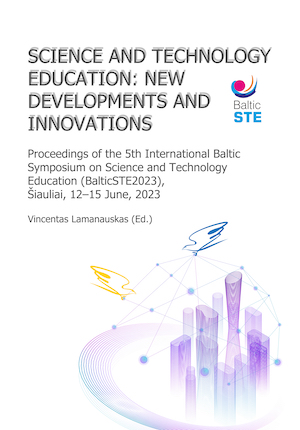THE APPLICATION OF INTERACTIVE LEARNING TASKS MADE BY USING DIGITAL HYBRID ILLUSTRATIONS IN THE TOPIC "HYDROCARBONS" IN EIGHTH-GRADE ORGANIC CHEMISTRY CLASSES
THE APPLICATION OF INTERACTIVE LEARNING TASKS MADE BY USING DIGITAL HYBRID ILLUSTRATIONS IN THE TOPIC "HYDROCARBONS" IN EIGHTH-GRADE ORGANIC CHEMISTRY CLASSES
Author(s): Agneš R. Sedlar, Tamara N. Rončević, Saša A. Horvat
Subject(s): Social Sciences, Education
Published by: Scientia Socialis, UAB
Keywords: digital learning; organic chemistry; hydrocarbons; hybrid illustrations;
Summary/Abstract: The content of organic chemistry is closely related to our everyday life, to nature, and to the human body. Illustrations play a big role in the acquisition of the course material, especially if those help to make the interpretation of the textual content easier. Hybrid illustrations are made up of combinations of realistic images (photographs, drawings) with abstract conventional elements (symbols, models, chemical equations). This type of illustration fuses difficult-to-interpret symbols often found in chemistry with everyday images that bring students closer to the content. The following study examines the use of digitally edited hybrid illustrations in interactive learning tasks that were used in the review and practice lessons on the Hydrocarbons topic in eighth-grade organic chemistry classes. The research took place in an experimental group of students from primary school in Novi Sad (Republic of Serbia), during which the students solved the given tasks on their cell phones via the Moodle platform. In the control group, teaching and learning took place in the traditional, or conventional way applying a lecture and a discussion method. After processing the Hydrocarbons topic, the experimental and control groups underwent the same testing process, the results of which prove the advantages of using the tasks created with the help of digital hybrid illustrations in the abstract parts of the curriculum.
Book: SCIENCE AND TECHNOLOGY EDUCATION: NEW DEVELOPMENTS AND INNOVATIONS
- Page Range: 210-222
- Page Count: 13
- Publication Year: 2023
- Language: English
- Content File-PDF

